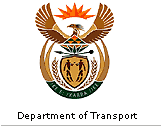 |
TRANSNET PIPELINES AND ITS ROLE IN PETROLEUM TRANSPORTBackgroundTransnet Pipelines, formerly Petronet, is an
operating business unit of Transnet Limited. It was
established in 1965. Transnet Pipelines owns, maintains
and operates a network of some 3000km of high-pressure
petroleum and gas pipelines. Some of the products
transported by Transnet Pipelines are, leaded and unleaded
petrol, diesel, aviation turbine fuel, crude oil and gas.
The Pipeline Network - Infrastructure• The liquid fuels network has 32 pump
stations/depots and transverses five provinces; KwaZulu-
Natal, Free State, Gauteng, North West and Mpumalanga.
• Petroleum products are injected into the
pipeline
from the following points: the two refineries at the coast
(Sapref and Enref), the inland crude refinery at Coalbrook
(Natref) and the synfuel plants at Secunda (Sasol II and
III).
• Crude oil for the Natref refinery is
transported
via a dedicated pipeline from an outer SBM, which is
situated offshore at Durban.
• The gas pipeline runs from Secunda to Durban
via
Empangeni. Clients are served at Newcastle, Richards Bay
and along the route between Empangeni and Durban.
• The pipelines range from 6” (150mm) to
20” (508mm)
in diameter and are all continuously welded x 52 steel
pipelines.
• All the pipelines have been constructed in
accordance with the American Code ASME B31.4 for liquid
and ASME B31.8 for gas.
• Products are transported through the various
pipelines at a maximum allowable pressure of up to 100 Bar
for petroleum products and 59 Bar for gas.
Monitoring, Maintenance And Protection Of Infrastructure• Pressure in the pipeline network is monitored 24
hours a day, 365 days a year in the Master Control Centre
in Transnet Pipelines’s head office Durban.
• Transnet Pipelines uses internationally
recognised
technological inspection tools called “intelligent
Pigs”
which tells us the condition of the pipe. This is done on
a five-year cycle and when otherwise necessary. It is a
known fact that by monitoring the pipe wall condition, one
can extend the life of the pipeline-even up to 65 or 70
years with diligent repairs and corrective maintenance.
• Inhibitor dosed at strategic points in the
network
protects the pipeline internally from internal corrosion.
• Cathodic protection protects the pipeline
external
metal loss caused by stray current corrosion.
• A specialized maintenance/operational crew is
o
standby 24 hours a day, 365 days a year to undertake
pipeline repairs, to ensure that maximum utilization is
obtained and that clients needs are met.
• Emergency plans that are regularly updated and
practiced, are in place in the event of major catastrophes
and/or incidents.
• Regular aerial inspections ensure that the
servitudes are well-maintained and untoward occurrences
immediately followed up.
• All pump stations are operated and monitored
centrally via a proven telecontrol system.
• Dynamic and passive leak detection systems are
utilized.
• The pipeline is sectioned with the aid of
block
valves and check valves that minimize loss/pollution
should a rupture occur.
• Pipelines are constructed to maximize safe
operation and minimise risk of environmental damage.
Future Plans To Ensure That Pipeline Infrastructure Meets Growing Economic And Social Demands Of The Country And The RegionIn order to meet the needs of the Oil Industry, our
clients, Transnet Pipelines endeavors to keep abreast of
market trends and changes in our area of operations and
neighboring regions. Detailed studies are undertaken of
petroleum product usage in all magisterial districts
concerned and the various transport modes (competition)
are identified. This is accomplished by undertaking
capacity studies in our network and identifying
bottlenecks or constraints that may need to be rectified
in the future.
Building of computer based capacity models allows Transnet
Pipelines to investigate many scenarios that may occur and
then easily make changes to the model as reality unfolds.
Our clients and Department of Mineral and Energy, are
party to this Capacity study and assist us in making
assumptions and the possible scenarios. A further
requirement of the current Capacity Plan is to identify
problem areas and plan actions, for possible contingencies
that may affect the motorists and the economy of South
Africa. These contingencies could entail the loss of any
of inland refineries, infrastructure disruptions of the
pipeline network, etc. These contingency plans could
involve a diversity of solutions. e.g. rail and road
bridging, emergency fuel supplies and possible rationing.
Analysis Of The Influence Of The Pipeline Infrastructure In The RSA In Terms Of Its Implication For National SecurityTransnet Pipelines conveys +-77% of all petroleum products
from the Coastal refineries and Inland refineries, to
depots owned and operated by their clients the Oil
Industry.
Secondary transport, road and rail, conveys the product
from the pipeline end point depots to the final
destination. The existing road and rail infrastructure
cannot handle the volumes of product conveyed by pipe.
Transnet Pipelines does operate and own a depot at
Tarlton, which is strategically located for over border
trade with Botswana. Our Transnet Pipelines depot at
Pretoria is ideally located in the transport chain for
petroleum products to Zimbabwe and further north.
Conceptional plans have been formulated to extend the
pipeline from Pretoria to Zimbabwe when volumes handled
warrant this.
Role And Function Of Pipelines From A Statutory And A Governmental Point Of ViewPetroleum products pipelines and crude oil pipelines are a
matured form of transport providing refineries with their
raw material (crude) or else delivering completed products
to the market. The pipelines operate on an open access
principle and tariffs are equal to all users. These
tariffs are published and used by Department of Minerals
and Energy to set the different zone prices for regulated
petroleum products.
Gas pipelines play a development role in a juvenile
developing gas market.
Pipelines form the cornerstone of bulk transport of
petroleum products and gas.
|
 |



